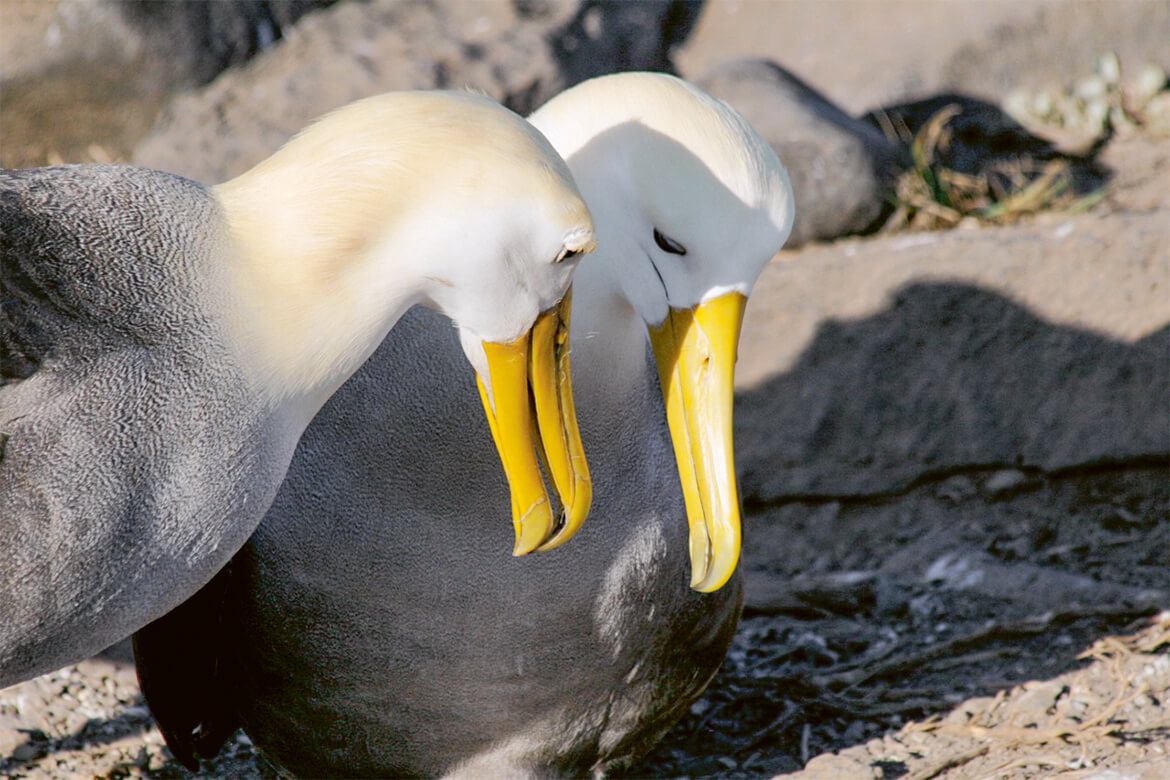Monogamy’s not the norm
Finding a mate or founding a family? A new mathematical evolutionary model is analysing an age-old dilemma.

A pair of Galapagos albatrosses, who mate for life. | Image: Wikimedia Commons/Hjalmar Gislason
Why do bull elephant seals mate with a whole harem of females? And why do albatrosses remain faithful to a single partner throughout their lives, spending a whole year together to bring up their young? From the perspective of evolutionary biology, these animals are on the horns of a dilemma. They can either invest their energies in seeking out additional partners to produce more young, or invest those energies in caring for their existing brood, thereby increasing the chances of their offspring’s survival.
Two researchers have carried out a new analysis of this problem and have discovered that promiscuous relationships are far more likely than monogamous reproduction. “The classical approach involves verbal models”, says Arne Jungwirth, who is currently at the University of Cambridge on a postdoc scholarship from the SNSF. “But we’ve now created a closed mathematical model that enables us to emulate the evolution of mating behaviour jointly with that of caring for offspring”.
Monogamy seems to be an exceptional circumstance that tends only to occur when population density is low – or when multiple partnerships would consume an extraordinary amount of energy. For example, if the best nesting place is already occupied by one female bird, then the reproductive success rate of a second female is lower if it has to accept a less suitable nesting place in the territory of their joint mate. “For the first time, our model enables us not just to observe an isolated mating pair but to take the whole surrounding population into consideration”, says Jungwirth.
A. Jungwirth and R.A. Johnstone (2019): Multiple Evolutionary Routes to Monogamy: Modeling the Coevolution of Mating Decisions and Parental Investment. The American Naturalist (2018)




